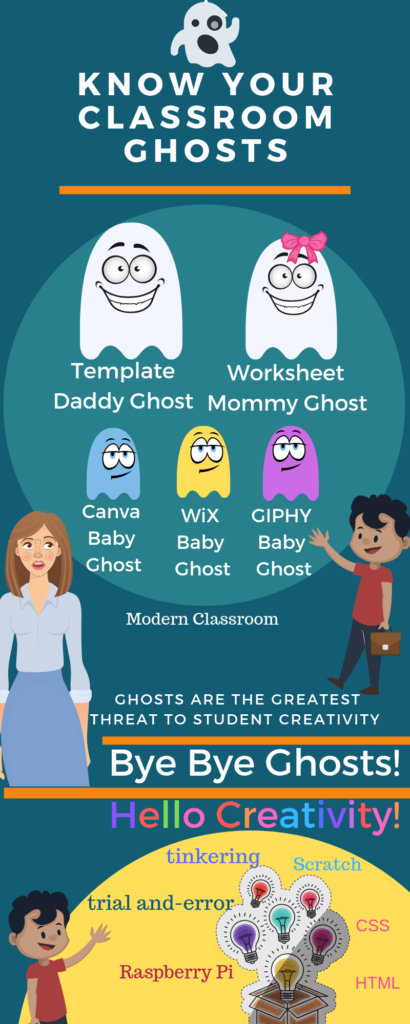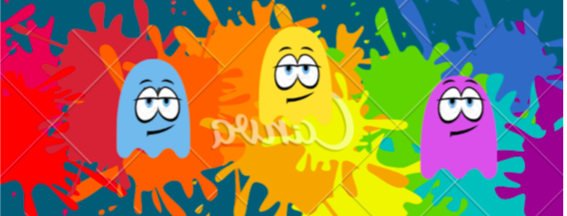Or learn to live with them cautiously.
A response to Digital Ghosts in the Modern Classroom by Ashley Hinck .
As a student teacher, I am just starting to create my teaching philosophy. As I read about multiple approaches to teaching and learning, I have conflicting feelings about what I want my teaching philosophy to be. Do I let my students decide what interests them and facilitate their learning or should I make sure that we cover everything in the curriculum with diligence? I went to high school when handouts and templates ruled all classrooms. So, I feel comfortable learning with templates, but I am not sure how valuable they are in the long run. Did they really help me retain much information? I would have to say, no. In the long run, classrooms where we explored topics through class discussion or hands on exploratory learning are the classes that I remember most from school.

Who are our classroom ghosts ?
In the article “Digital Ghosts in the Modern Classroom” by Ashley Hinck the author talks about “The ghosts of worksheets, templates, and shortcut websites” and how their presence in the classroom defines our students’ learning, and our teaching philosophy. The author goes on to say that the drag and drop websites and platforms, such as Canva, WiX or GIPHY, are the new template and worksheets of digital media and are ultimately damaging students’ creativity. Her classroom experience reveals that students’ expectations are so tightly linked to these template platforms that they find learning a computer language completely unsatisfying. She explores the idea that learning through trial and error is not encouraged by these platforms as well as in our kindergarten to grade 12 education system. The author believes that students should be encouraged to explore more open-ended programming languages (CSS, HTML) or programs like photoshop so that they can see themselves as the creative authority of their own work. She suggests that students’ work must not always hit all the marks and a greater value should be placed in the idea of exploring, and the trial and error model of leaning. Having had some experience in the working world and particularly in product development, I agree with the author that learning through the trial and error process is important for surviving the real world. Coming out of school that was a hard concept for me to grasp and it was an idea that I had to accept and adopt, as formal schooling certainly did not introduce me to the trial and error model of learning.
However, I also believe that not everyone needs to reinvent the wheel. If students in the digital media classrooms enjoy, have an interest in, learning more about these platforms, I think time should be made to explore them. Templates created by designers on platforms such as Canva are useful, beautiful tools that can be used, explored and enjoyed by students.
Playing with Canva
Creating the infographic for this article, and using Canva for the first time, I enjoyed working with the platform. Canva provides beautiful templates, but that doesn’t mean that one has to use them as they are. I think Canva templates could also be used as a creative starting point for students. They were definitely that for me. I enjoyed playing with the different features of this platform and creating the ghost characters in the infographic by layering different shapes. I also enjoyed that you could try the platform for free for the first month, so that someone just starting on the platform can explore all features for free.
Approach Ghosts with Caution!

Learning how to code and creating a website from scratch is a valuable skill. In addition, learning the coding language will serve students in the years to come but I think that template platforms are also valuable and can be used to benefit us as teachers to present information in a creative way. Students can use these platforms creatively present their ideas. However, students should be aware that their knowledge about these platforms can be obsolete in a few years because they are always changing. Furthermore, students’ ability to present information creatively will always depend on such platforms if they don’t put an effort to learn the basics of more open-ended tools such as photoshop or coding languages.
